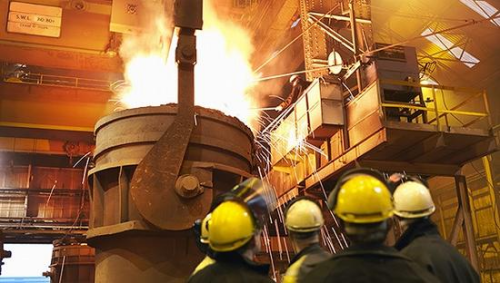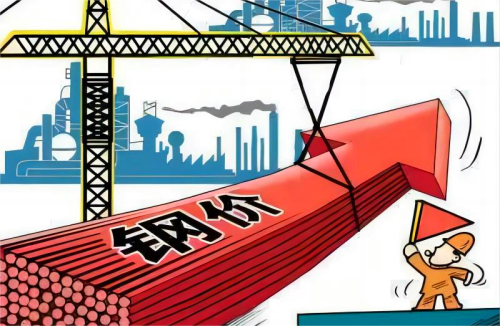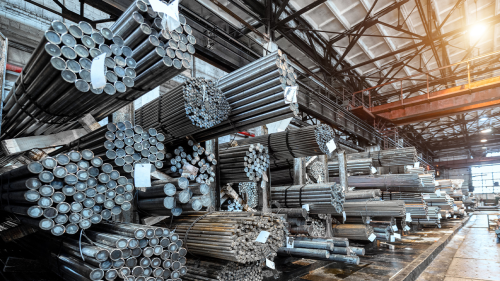【Steel Market】Intensified Game: Low Inventory Meets Weak Demand, Prices...

Graphite electrodes are vital to EAF steelmaking—acting as the “core component” for arc heating. With excellent conductivity and heat resistance, they’re key to improving steel quality and output. Master them, master EAF steelmaking!
【Steel Market】Intensified Game: Low Inventory Meets Weak Demand, Prices Consolidate in Narrow Range with Underlying Strength
This week, the steel market moved forward amid contradictions: on one hand, production and inventory continued to decline; on the other hand, demand remained weak due to financial constraints and weather conditions. Unlike previous years, the steel market did not experience a sharp price plunge during the traditional off-season but instead showed unexpected resilience amid the supply-demand tug-of-war.
Dilemma in a Weak Supply and Demand Market

This week, the steel market moved forward amid contradictions: on one hand, production and inventory continued to decline; on the other hand, demand remained weak due to financial constraints and weather conditions. Data show that as of June 13, the output of five major steel products dropped to 7.486 million tons, down 2.92% week-on-week. Blast furnace capacity utilization slightly declined to 90.6%, while electric furnace capacity utilization slid to a low of 56.7%. Steel mills have actively reduced production, and supply continues to tighten.
Meanwhile, steel inventory continued to decline. The social inventory of five major steel products fell to 9.275 million tons, down 0.38% week-on-week; in-plant inventory dropped to 4.271 million tons, down 1.32% week-on-week. Notably, current inventory levels are significantly lower than the same period last year—social inventory down 26.82% and in-plant inventory down 14.47%—marking the lowest levels in the past three years.
However, demand remains weak. The apparent consumption of five major steel products decreased by 1.59% week-on-week. Construction steel sales were only 100,000 tons, down 6.18% week-on-week. A survey by Baijian Construction Network shows that the fund availability rate for construction sites further declined to 59.03%, with residential construction projects' fund availability rate below 50% (only 49.19%).
Three Signals Quietly Support Price Stabilization

The cost bottom has already emerged. The average off-peak power cost of EAF rebar is 3,094 yuan/ton, with mid-spec rebar suffering an average off-peak power profit loss of 140 yuan/ton. Losses have forced widespread production cuts among EAF producers, and the weekly output of short-process steel mills has dropped to a low of 250,000 tons.
Although blast furnaces still have some profit space, the third round of coke price cuts (a cumulative reduction of 135 yuan/ton) has been implemented, and iron ore prices have also fallen slightly. The raw material price downside is narrowing, and cost support is gradually strengthening.
The inventory reservoir is nearing depletion. National rebar inventory has dropped to 5.58 million tons, down 28.5% year-on-year, reaching an absolute historical low. Despite localized inventory accumulation in South China due to rainfall, the overall inventory inflection point has yet to form.
The low inventory pattern gives steel prices strong resilience against falling. Traders are actively controlling inventory levels, weakening the market's "reservoir" function and thus preventing a price collapse under inventory pressure.
Policy support continues to increase. As of June 10, the newly issued scale of special land reserve bonds this year has reached 108.348 billion yuan, involving 442 projects. The issuance of ultra-long-term special treasury bonds is proceeding steadily, and the acceleration of special bond issuance is injecting financial vitality into infrastructure projects.
Positive signals have emerged from China–U.S. trade negotiations, alleviating panic sentiment caused by previous "reciprocal tariff" policies from the U.S. Macro policies and industry self-discipline are forming synergy. Recently, the China Iron and Steel Association issued an initiative calling for collective resistance to "involution-style" competition.
Historic Breakthrough in Manufacturing Steel Consumption Share

Manufacturing steel consumption is now taking over the baton of demand. In 2024, the share of manufacturing steel usage in China rose from 42% to 50%, achieving a historic breakthrough. This structural shift provides solid support for steel prices.
Steel demand in the automotive industry is growing against the trend. Stimulated by the "Two New" policies, automobile production is expected to reach 32.9 million units in 2025, driving steel demand to 59.8 million tons, up 4% year-on-year. The demand for high-grade silicon steel and automotive sheets is particularly strong for new energy vehicles.
The machinery industry is entering a recovery cycle. Steel demand from the machinery industry is expected to reach 179 million tons in 2025, a year-on-year increase of 1%. Overseas orders for construction machinery are growing steadily, and demand for high-strength steel is clearly rebounding.
Steel demand in the energy sector is steadily rising. Against the backdrop of rapid growth in electricity consumption, steel demand from the energy industry is expected to reach 49.5 million tons in 2025, up 1.9% year-on-year. Wind power, photovoltaics, and other new energy equipment offer vast demand space for high-end pressure vessel steel.
Shipbuilding has become a new demand highlight. As the global shipbuilding industry recovers, demand for ship plates is significantly increasing. Tighter tolerance control and higher delivery timeliness requirements are driving premium ship plate pricing.
How to Strategically Position in the Bottom Range

Currently, the absolute rebar price index has fallen to 3,208 yuan/ton, down 8.3% from the beginning of the year and down 13.2% year-on-year. According to historical data, the last time the index was at this level was in 2016, followed by a five-year rebound cycle.
For end-use steel enterprises, this is a golden window to lock in costs. Industries sensitive to costs, such as machinery manufacturing and steel structures, can build positions in batches based on their production plans.
Traders are advised to adopt a "buy-the-dip and trade-the-range" strategy, focusing on low-inventory specification products, especially northern resources. Given the historical low of social inventory, once marginal demand improves, prices for scarce specifications will show significant elasticity.

The market bottom has never been a precise price point but rather a value range. Currently, rebar prices have fallen below the cost line of most EAF steel mills. The average loss among 76 EAF mills in China has reached 129 yuan/ton, and off-peak power profits are also in a deficit of 25 yuan/ton.
A wave of production cuts is sweeping across the industry. EAF enterprises continue to expand their production cuts, and blast furnace capacity utilization is also showing signs of loosening. Meanwhile, national rebar inventory has fallen 28.5% year-on-year, and the inventory reservoir is nearing depletion.
The trigger for a steel price rebound may come from a construction rush after typhoons in Hainan, a concentrated release of special loans for affordable housing projects, or a new round of stockpiling along automotive production lines. These demand forces are surging beneath the surface, just waiting for the right moment to break out.
Feel free to contact us anytime for more information about the EAF Steel market. Our team is dedicated to providing you with in-depth insights and customized assistance based on your needs. Whether you have questions about product specifications, market trends, or pricing, we are here to help.
No related results found








0 Replies